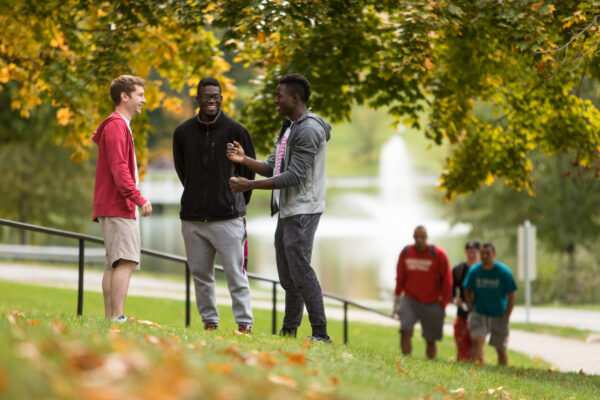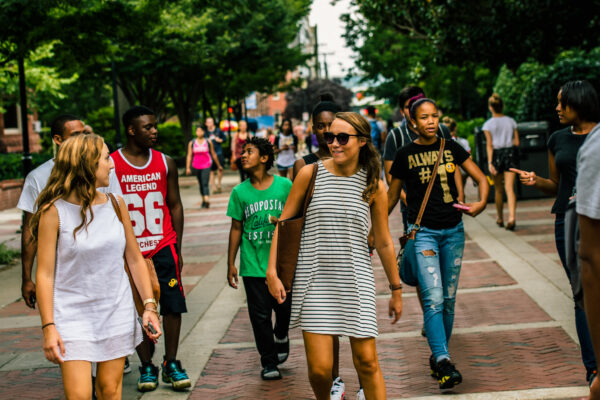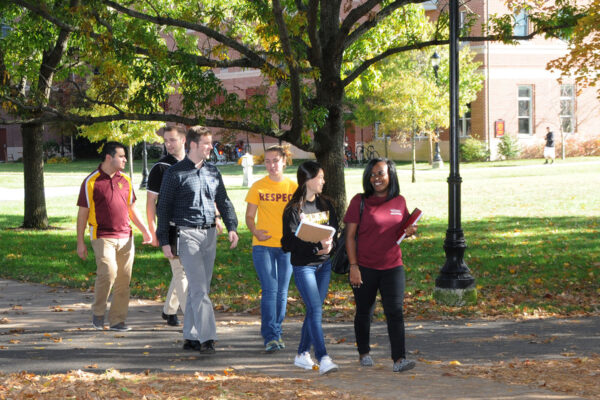Freedom of Expression Requires Safe Spaces
By Morgan Taylor
This session was hosted by LGBTQ Presidents in Higher Education.
“It is completely appropriate that all students have safe spaces in which they can grow and develop their identities.” This statement, by Ralph Hexter of University of California, Davis, was the premise upon which panelists at ACE2017 started their session on freedom of expression and safe spaces.
The panelists—Ramon S. Torrecilha of Westfield State University (MA), DeRionne P. Pollard of Montgomery College (MD), and Felice Nudelman of Antioch University—shared examples of negative experiences (both personal and those of their students) that have occurred on campus in the past few months. They also shared how these experiences transformed institutional practices to create safe spaces that allow for all students to express themselves and feel welcome.
Tensions on campuses are increasingly building (and sometimes become violent) around the creation of an inclusive, safe space for students, often from marginalized groups (racial/ethnic minorities, LGBTQ, Muslim, Jewish, immigrants, etc.), and freedom of speech for all. How can we come together in productive civic dialogue where we can learn from our differences and these spaces for all students to share their perspectives, identities and backgrounds?
- Check our own biases. Everyone comes to the table with biases. By acknowledging what those are, we keep them at top-of-mind when engaging with others, in turn making us less quick to judge those with views different from our own.
- Radical Inclusion. Pollard introduced the idea of being radical with inclusion (she defines inclusion as “intentional and proactive policies, practices, procedures, promises, to ensure equitable and inclusive experiences and outcomes for all students”). Institutions can assist their community with getting to the root of what brings people together and, conversely, what separates them.
- Normalize the issues. Torrecilha shared that on his campus, students are comfortable speaking about some diversity and equity issues openly because they have been normalized. While there is room for improvement, this normalization allows students to speak freely in a safe space.
- Break down silos. Not all students on a college campus share the same views and values. We cannot deny the opposition the opportunity to voice their opinions. Campuses must create safe spaces in which multiple opinions can be expressed, not just those that support our own.
- Learner-centered approach to teaching. Nudelman noted that it is the duty of everyone, including faculty, staff and leadership, to ensure that campuses are learner-centered. If students engage in hate speech, campuses should take these as opportunities to teach them about the history and ramifications of such speech so that they learn how their actions and words affect others.
- Educate students on healthy debate. Engaging students within the community’s K-12 system prepares them to participate in respectful, meaningful civil discourse and debate and teaches them how to be global citizens who value empathy–skills they can take with them to college when they graduate high school.
Leaders in higher education need to be prepared to create welcoming environments for all students, regardless of political ideology, creed, race/ethnicity, sexual orientation, immigrant status and the many other identities students hold. In providing space for civil discourse, students can learn from their differences and be welcoming neighbors to broader society.
We have a long way to go, but by working together, being mindful of our own perspectives and biases, and being open to listening to others, we can get there. As Hexter stated, “Everyone can learn.”
If you have any questions or comments about this blog post, please contact us.


